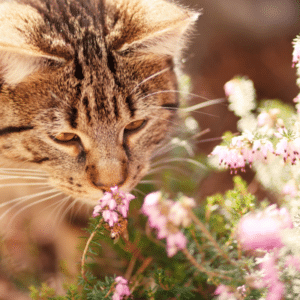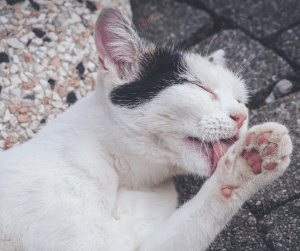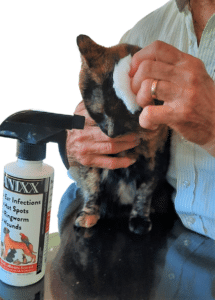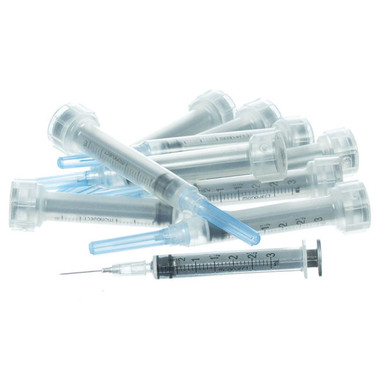Cat Bee Sting First Aid: Comprehensive Guide to Recognize, Respond, and Prevent Bee Stings in Cats
Estimated 0 min read

What to do for cat bee sting
Ever watched your feline friend chase a buzzing bee and thought, “This won’t end well”? You’re not alone. Cats and bees have a long history of curious encounters, often ending with a surprised yowl and a puffy paw.
Now, we love our cats’ adventurous spirit, but when it comes to bees, it’s a bit of a buzz-kill. That’s why we’ve put together this comprehensive guide on cat bee-sting first aid. It’s got everything from recognizing a bee sting to post-sting care, and even tips on preventing future stings.
So, buckle up, grab a cup of coffee (or a saucer of milk, if you’re feeling feline), and get ready to dive into the world of cats and bees. Trust us, it’s more entertaining than watching your cat chase its own tail. And who knows? You might just become the bee-sting first aid pro your cat didn’t know they needed!
Facts about bee stings on cats
- Cats often get stung on their faces or paws, and while most reactions are mild, some cats can have severe allergic reactions.
- After a cat has been stung by a bee, remove the stinger, soothe the sting site, and monitor for any signs of allergic reaction.
- Preventing future bee stings involves being aware of where bees hang out, not leaving out food that might attract bees. This may include keeping your cat indoors when bees are most active.
The buzz about bee stings in cats

Cats usually get stung on face or paw
Cats, with their natural curiosity and quick paws, often find bees and other insects fascinating. They might swat, chase, or even try to sniff these buzzing critters. But bees, hmmm…they’re not too fond of this attention! They have a stinger at their rear end, and they’re not afraid to use it when they feel threatened.
Now, where do cats usually get stung? It’s usually their faces and paws. Imagine your cat reaching out a paw to tap at a curious bee or leaning in for a sniff – bam! That’s when a sting might happen.
But here’s the thing: a bee sting is more than just a tiny ouchie for your cat. Bee venom can cause a range of reactions, from a minor annoyance to a serious health risk, especially if your cat is allergic to the sting.
So, as a cat parent, it’s crucial to understand the buzz about bee stings in cats. It’s not just about knowing what happens when your cat decides to pick a fight with a bee. It also includes how to be prepared to act if the bee lands a punch (or rather, a sting).
In the next section, we’ll talk about how to tell if your cat has been stung by a bee. Because, let’s face it, it’s not like your cat is going to come up to you and say, “Hey, I just got stung by a bee.”
How to tell your cat has been stung by a bee
Alright, now that we’ve covered the why and where of bee stings in cats, let’s move on to the how – how to tell if your cat has been stung by a bee.
Cats are masters of disguise when it comes to showing they’re in pain. They might not yowl or make a fuss, but there are subtle signs that can tell you something’s up.

Watch for cat chewing on paw
First things first, keep an eye out for any unusual behavior. If your cat is suddenly acting like they’re in a dramatic play and pawing at their face or chewing at their foot, that’s a sign of trouble. Then, if they’re performing a soliloquy about the perils of bee stings, that’s a pretty good sign that they’ve been stung.
Next, take a closer look at your cat. Does she look like as though she is auditioning for a role in a cartoon, with a comically swollen face or paw? Swelling is a common reaction to a bee sting. But remember, your cat’s fur can make it tricky to spot, especially if they’re the fluffy kind.
Now, let’s talk about the more serious signs. If your cat is showing any of these, it’s time to switch from detective mode to action mode. The clues may include: rapid breathing or drooling like they’ve just seen a can of their favorite tuna. It may be weakness, vomiting, or pale gums. These are all indications of an allergic reaction to a bee sting. If you notice any of these, it’s time to get your cat to the vet, pronto.
But don’t get too excited. Most cats aren’t even allergic to bee stings, and these symptoms are not the norm. Nonetheless, it’s always better to be safe than sorry, andknowingwhat to look out for can make all the difference.
What to do right after a cat has been stung by a bee
So, you’ve spotted the signs, and it’s clear: your cat has been stung by a bee. Now what? Well, it’s time to roll up your sleeves and spring into action. Here’s your step-by-step guide to dealing with a bee sting on your cat.
Step 1: Keep Calm and Carry on
First things first, remember to stay calm. Your cat might be a little stressed out (being stung by a bee isn’t exactly a walk in the park), and they need you to be their Rock. Plus, keeping a cool head will help you follow the next steps more effectively.
Step 2: Find the Stinger
Next, it’s time to play detective again. Look for the bee stinger. Bees usually leave their stinger behind, and it can continue to release venom into your cat’s body. So, finding and removing it is crucial. But remember, this is a search-and-rescue mission, not a squeeze-and-pull operation. Squeezing the stinger might release more venom, which we definitely don’t want.
Step 3: Remove the Stinger
Once you’ve located the stinger, it’s time for the rescue part. Use a credit card or something similar, you’ll need to scrape the stinger out. Just slide it across your cat’s skin to gently dislodge the stinger. If you’re more of a debit card person, that works too. The key is to avoid using tweezers or your fingers, which could squeeze more venom out of the stinger.
Step 4: Soothe the Sting
Now that the stinger is out, it’s time to soothe your cat’s skin. Make a paste with baking soda and water and apply it to the sting site. This will help neutralize the venom and reduce the sting’s itchiness and discomfort. You can switch off and applyBanixx Pet carealso as a soothing agent.
Step 5: Ice, ice, for Kitty
Finally, to help reduce swelling, apply a cold compress to the affected area. You can use a bag of frozen peas wrapped in a towel, or ice cubes wrapped in a cloth or just a cold, damp cloth. Hold it against the sting site for about 10 minutes.
And there you have it! Your immediate response to a bee sting on your cat. But remember, this is just the first part of the process. After all – what are you supposed to do if the above steps don’t work and your cat is actually allergic to bee stings? Fear not! We have the answers!
What to do if your cat is allergic to bee stings
Just as with some humans, some cats can have allergic reactions to bee stings. These reactions can range from mild to severe, and in rare cases, they can be life-threatening.
If your cat starts showing signs like hives, excessive swelling, pale gums, lethargy, changes in pulse, trouble breathing, vomiting, diarrhea, or collapse, it’s time to sound the alarm bells. These are signs of an allergic reaction and they mean your cat needs to see a vet, stat.
Even if your cat isn’t showing signs of an allergic reaction, there are times when a trip to the vet is necessary. If your cat has been stung multiple times, it’s best to get them checked out. More stings mean more venom, and that can lead to more severe reactions.
Also, if your cat’s symptoms don’t improve within 24 hours, or if they get worse, it’s time to dig out the cat carrier and see your Vet. It’s always better to be safe than sorry when it comes to your feline friend’s health.
Remember, you’re not alone in this. Your vet is there to help, and they’re just a phone call away. So, don’t hesitate to reach out if you’re worried about your cat after a bee sting.
After the buzz is gone: how to care for your cat after a bee sting
Alright, you’ve handled the immediate crisis like a pro, and your cat is on the mend. But don’t let your guard down just yet. Post-sting care is just as important to ensure your feline friend recovers fully and comfortably. So, let’s get into it.
Step 1: Keep an eye on the Wound
First up, you’ll want to monitor the sting site. Keep it clean and watch out for any signs of infection, like increased redness, swelling, or pus. If you notice anything unusual, it’s time to call the vet.
Step 2: Discourage Scratching
Cats might try to scratch or lick the sting site, which can delay healing and lead to infection. To prevent this, you might need to use a cone of shame (or an e-collar, as the vets call it). Yes, your cat might look like a satellite dish, but it’s for their own good.
Step 3: Hydrate and Feed
Make sure your cat stays hydrated and continues to eat. If your cat was stung in the mouth, they might find it difficult to eat their usual dry food. In this case, try offering them wet food, or soften their dry food with a bit of water. Pull every trick out of the bag to encourage your cat to eat and drink.
Step 4: Comfort is Key
Finally, make sure your cat is comfortable. Extra cuddles and petting can go a long way in helping your cat feel better. After all, who doesn’t love a bit of TLC when they’re feeling under the weather?
And there we are! Your guide to post-sting care for your cat. Except, we have a few simple, easy ideas how to avoid the sting in the first place. In the next section, we’ll talk about how to prevent future bee stings. Because, as they say, prevention is always better than the cure.
How to prevent your cat from getting stung by bees
Now that we’ve navigated the stormy seas of bee stings and come out the other side, let’s talk about calmer waters. How can we prevent our curious cats from getting stung by bees in the future? Here are some tips to help keep your feline friend safe.
Step 1: Bee aware
The first step in prevention is awareness. Be mindful of where bees tend to hang out in your yard. Flower beds, fruit trees, and water sources are all bee hotspots. If your cat loves to explore these areas, you might need to supervise and/or limit their outdoor adventures.
Step 2: No sharing allowed
Bees are attracted to sweet things, including your cat’s food and water. So, try to avoid leaving these out in areas where bees are present. Remember, sharing is caring, but not when it comes to your cat’s food and bees!
Step 3: Professional hive removal
If you notice a beehive on your property, don’t try to remove it yourself. This is a job for the professional. They have the right equipment and knowledge to remove the hive safely, without harming the bees or risking further stings.
Step 4: Indoor adventures
One of the best ways to prevent bee stings is to keep your cat indoors, especially during the warmer months when bees are most active. There are plenty of ways to keep an indoor cat entertained, from interactive toys,catnip toysand window perches for bird watching.

Create a safe environment for your cat
So this is what we have for you! Your guide to preventing future bee stings in cats. Remember, the goal is not to make your cat live in a bubble, but to create a safe environment where they can explore and play without the risk of bee stings.
In summary, we’ve journeyed through the world of cat bee-sting First Aid, from understanding bee stings to preventing future encounters. Remember, knowledge is power, and being prepared is the best way to ensure your feline friend stays safe and happy.
But our cat-a pedia doesn’t have to end here. With ourBanixx blogswe’re always buzzing with new feline information, tips, and advice to help you provide the best care for your cat. Whether it’s understanding their quirky behaviors, learning aboutcat health issues, or discovering the latest in cat care products, we’ve got you covered.
Of course, we already know that you care a lot about your cat’s health – otherwise you wouldn’t be reading this blog! That’s why we hope you’ll come back to ourblogto learn more about how to keep your purr-fect, furball friend happy and healthy. If, on the other hand, you are interested in how totreat cat hot spotsor takeof your cat’s ear infectionmaintain yourdog’s nails/claws, yes, we cover that too. Or are you interested in more quirky items? such as whydoes my cat get hairballs, we’ve got that covered.
https://www.bayswaterveterinaryreferrals.co.uk/article/how-to-treat-a-cat-thats-been-stung-by-a-bee/
https://www.hillspet.com/cat-care/healthcare/cat-gets-stung-by-bee-wasp
https://vcahospitals.com/know-your-pet/first-aid-for-insect-stings-in-cats
https://www.sfspca.org/blog/bee-sting-safety-cats/
https://www.rover.com/blog/cat-stung-by-bee/
https://www.centrevillesquareanimalhospitalva.com/blog/first-aid-for-insect-stings-in-cats/


















